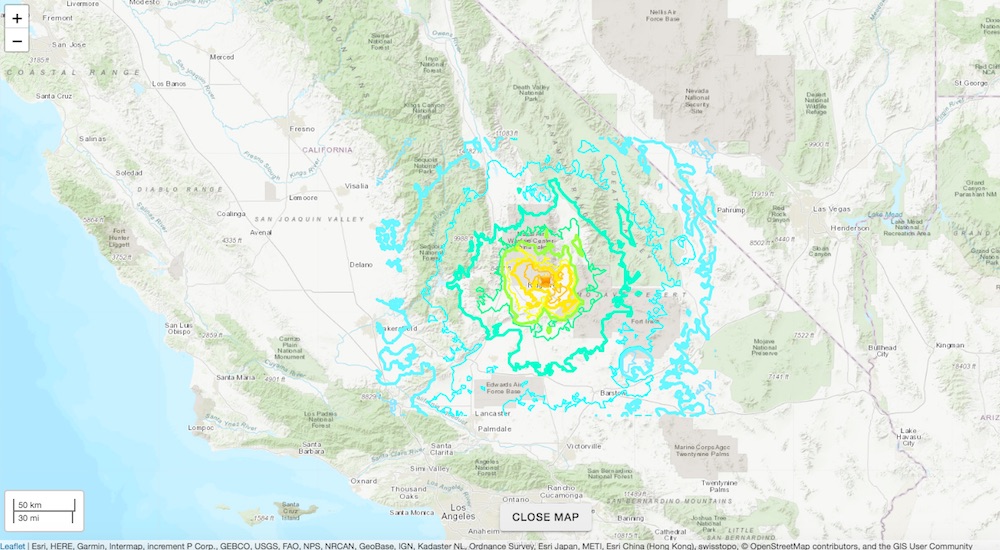
Another, even more powerful earthquake rocked Southern California on Friday (July 5). The temblor, which struck not far from the town of Ridgecrest in the Mojave Desert, registered as a magnitude 7.1, which is larger than the one that rocked the same general region on Thursday (July 4), according to the U.S. Geological Survey. That quake, a magnitude 6.4, was the largest to strike Southern California in 20 years, and was felt as far as Los Angeles.
Today's monster quake caused injuries, fires and rockslides, and left more than 3,000 people without power. Shaking was felt as far away San Jose, about 260 miles (418 kilometers) from Ridgecrest, the Los Angeles Times reported.
Since the magnitude-6.4 quake on Thursday, more than 1,000 aftershocks have struck the area, CBS News reported. So Friday's powerful ground-shaking was not a complete surprise.
In fact, seismologists warned earlier Friday that additional quakes were likely in the next week, and said there was a 9% chance of a quake larger than Thursday's temblor striking the area, Live Science reported. Seismologists now think that the fault system responsible for the quakes is growing, and residents of Ridgecrest and the nearby desert town of Trona can't breathe easy just yet. Aftershocks to this quake, which is now considered a "foreshock," are very likely, experts said.
"There's a 5% chance that this could be followed by an even larger quake," USGS seismologist Robert Graves said at a news conference on Friday, as reported by the LA Times.
- The 10 Biggest Earthquakes in History
- Image Gallery: This Millennium's Destructive Earthquakes
- Photo Journal: The Gorgeous San Andreas Fault
Originally published on Live Science.
Sign up for the Live Science daily newsletter now
Get the world’s most fascinating discoveries delivered straight to your inbox.

Tia is the managing editor and was previously a senior writer for Live Science. Her work has appeared in Scientific American, Wired.com and other outlets. She holds a master's degree in bioengineering from the University of Washington, a graduate certificate in science writing from UC Santa Cruz and a bachelor's degree in mechanical engineering from the University of Texas at Austin. Tia was part of a team at the Milwaukee Journal Sentinel that published the Empty Cradles series on preterm births, which won multiple awards, including the 2012 Casey Medal for Meritorious Journalism.









